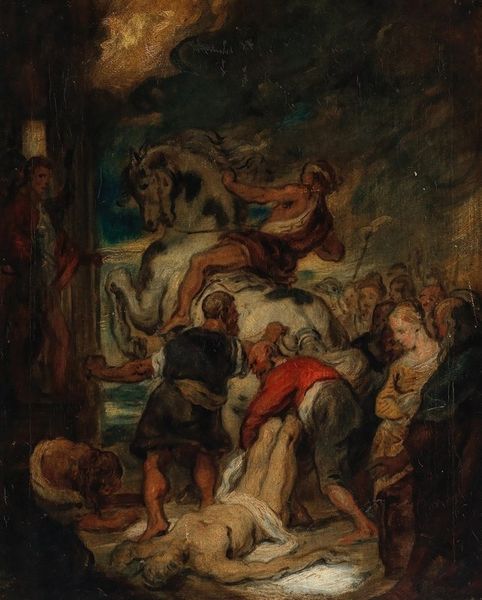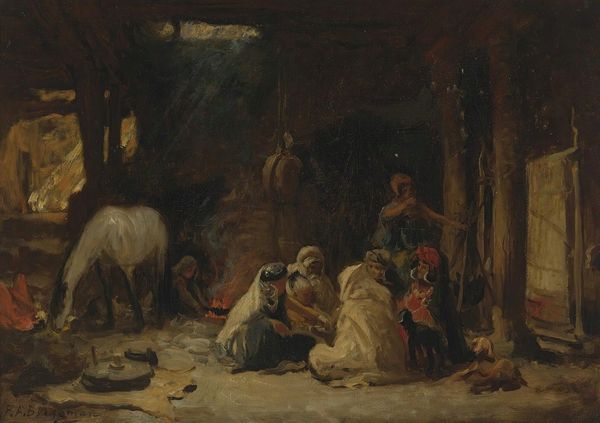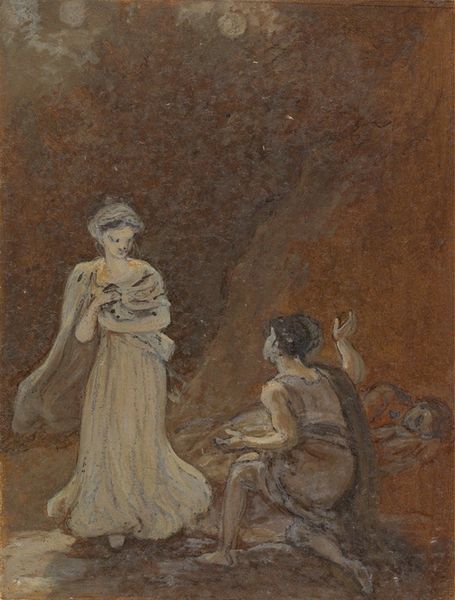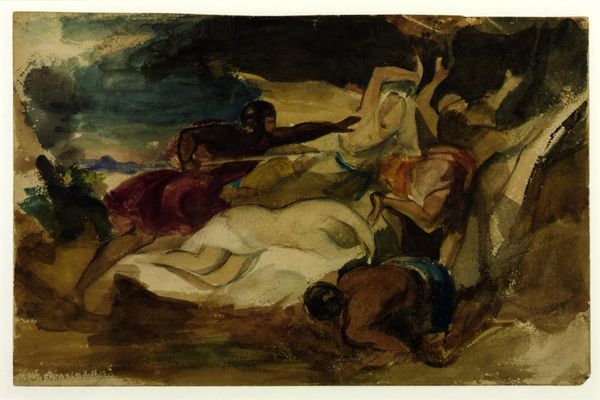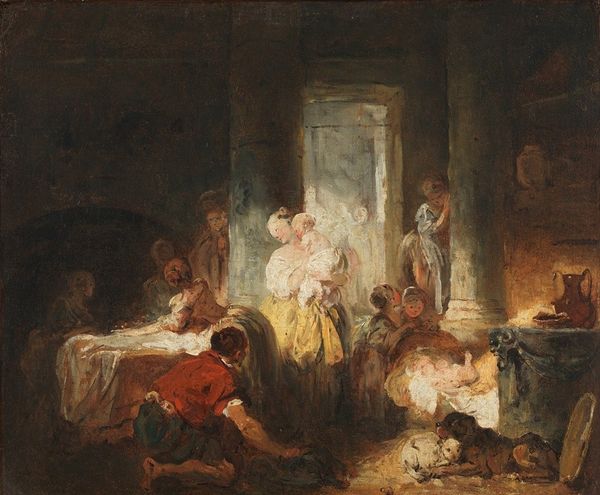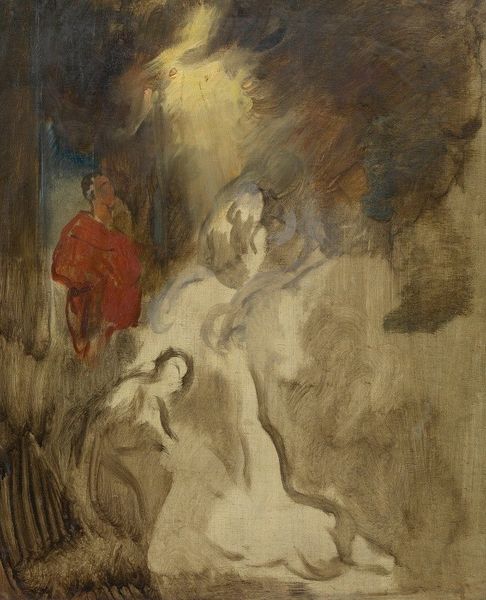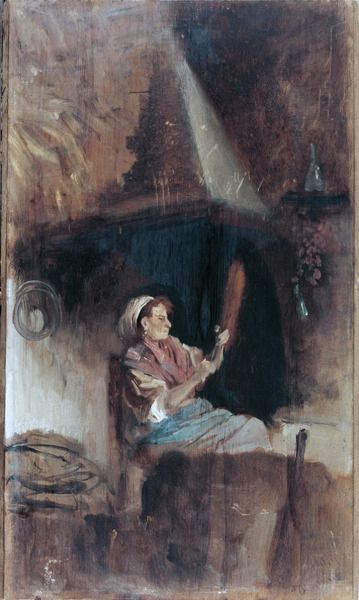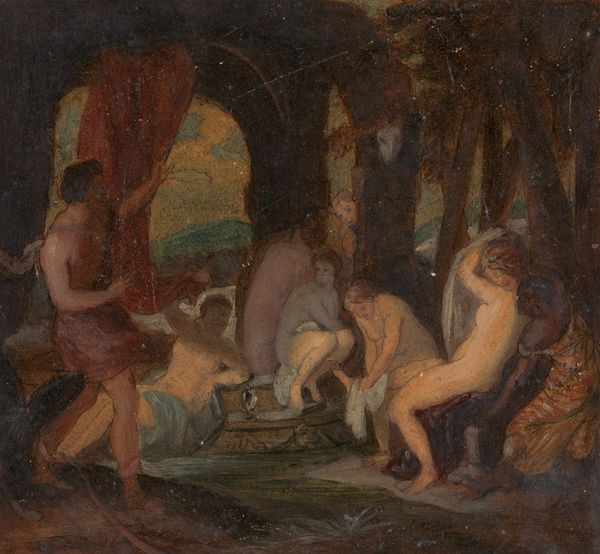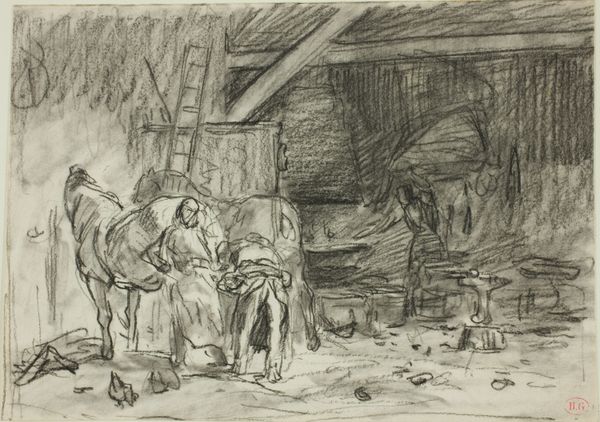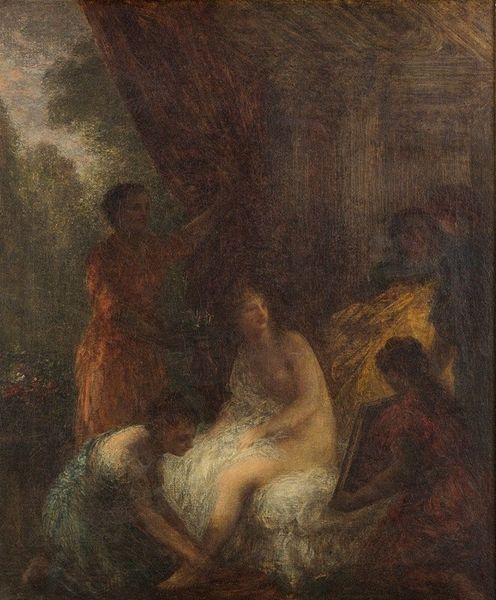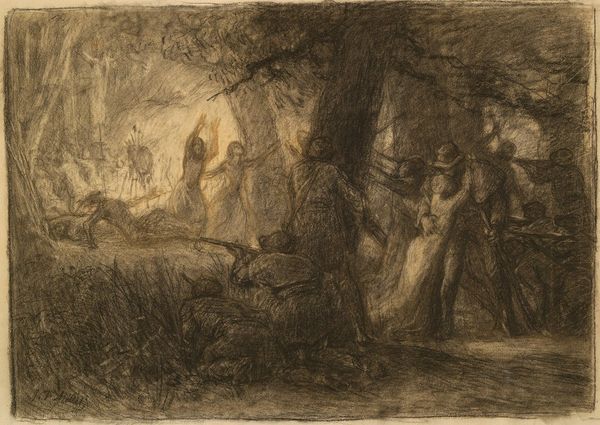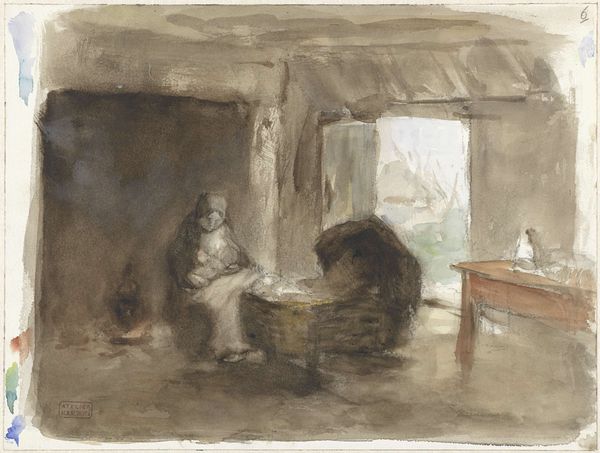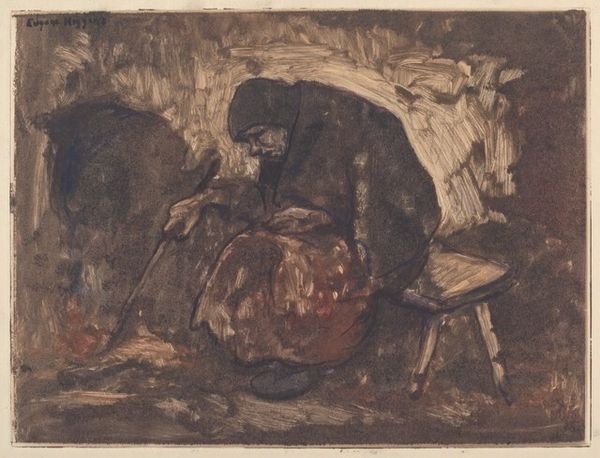
painting, watercolor
#
figurative
#
painting
#
figuration
#
oil painting
#
watercolor
#
romanticism
#
genre-painting
#
history-painting
#
watercolor
Copyright: Public Domain: Artvee
Curator: This is Thomas Sully's painting, "Robinson Crusoe and Friday in the Cave." Editor: It's immediately striking how dimly lit this scene is. The muted colors give the impression of being shut off from the world. A cave perhaps? Curator: Exactly! It illustrates a key moment from Daniel Defoe's novel, where Crusoe, the shipwrecked protagonist, shares his makeshift home with Friday, the rescued islander. Sully’s piece invites us to consider the complex power dynamics inherent in this relationship, reflective of colonial narratives of the time. The notion of Crusoe, the European colonizer, 'civilizing' Friday becomes quite evident when situated within broader historical power struggles. Editor: While that's interesting context, I am drawn to how Sully uses light. It is hitting the white cloth on the table in a way that illuminates both Friday and Robinson's faces. Notice the positioning, one can sense that both characters have a common relationship and see the book sitting in between them. Curator: Note too the parrot on the table, subtly indicating Crusoe's imposed sense of domesticity and order onto this wild existence, while also speaking to Crusoe's attempts to recreate a familiar, European environment. The book sitting between them really emphasizes that Friday's education is paramount to this narrative of 'civilization.' Editor: Despite the overt subject matter and racial undertones you described, the brushwork is incredible, adding a level of complexity through light, form, and shape, all speaking to a common bond regardless of anything else. Curator: By recognizing the artist's use of colonial depictions, and what we understand through postcolonial readings, we can view this piece as more than just an image from a classic adventure tale. We can also understand it through a framework of power, subjugation, and cultural dominance that shaped much of our global history. Editor: A fascinating piece, offering much to interpret both aesthetically and contextually, for sure. Curator: Absolutely. Hopefully our discussion encourages a much richer interpretation of what's shown.
Comments
No comments
Be the first to comment and join the conversation on the ultimate creative platform.
